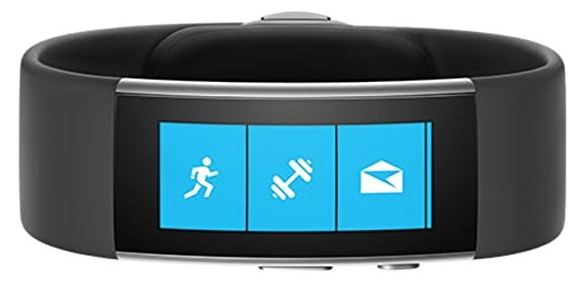I was trying to think what the collective term for fitness watches and trackers might be (akin to a murder of crows, or a sloth of bears) and what came to mind was “a frustration”.
Wearable technology is increasingly becoming part of the world we live in. From ingestible medical devices to AR headsets, from clothing with connectivity to gadgets to make your running smarter, we are buying more and more tech to generate more and more data about our lives. Allegedly at least, making us more productive, fitter and healthier.
These devices promise so much, and sometimes deliver nothing but broken promises and disappointments. Even the veterans of the bunch, the fitness trackers, are inconsistent, sometimes temperamental, and occasionally as forgetful as a regular person (“what device was I supposed to be connected to?”).
I’ve had two main fitness trackers/”smart” watches over the past four years, and the experience with both had some of the above shortcomings, but I ended up really loving one of the trackers.
My current tracker is a Fitbit Blaze HR, and, well, it’s ok. I specifically bought the HR model because, you guessed it, I wanted to track my heart rate while exercising. Turns out there’s a catch with that. There are a good number of posts in the Fitbit forums on how you need to move the strap several finger widths up your wrist and tighten the strap when exercising in order for the Blaze to get a good heart rate read. In practical terms it’s fine for resting heart rate, but not so good for exercise, particularly anything like HIIT or hypertrophic lifts that cause your pulse to spike significantly.
I’ve gone through the stock silicone band since I first started using it just over a year ago – I’ve since replaced it with a metal one, which seems likely to last longer (and gives the watch a smarter look, in my opinion).
Prior to the Blaze, I had a Microsoft Band 2 for two years, and despite its idiosyncrasies it did everything I wanted it to. It, too, struggled with heart rate accuracy. (Most LED-based trackers won’t hold a candle to a dedicated Polar-style ECG band around the chest, but I don’t like the faff associated with those. Given how frequently I forget my water bottle, it’s also just one more thing to add to the list of gear needed to have a workout).
The critical difference for me between the two trackers was that the MS Band 2 very rarely lost sync with my phone, controlled music properly (which in the gym is a lot handier than taking your phone out and scrolling through playlists), and displayed just enough notifications to be useful. The Blaze doesn’t do these things well. It often loses sync, sometimes to the point where I have to reboot both phone and watch to get sync re-established, and then it only works after several tries. Its battery life is relatively short, and very unpredictable. And for some reason it just doesn’t make me like it the way the MS Band 2 did.
So why am I using a fitness tracker I don’t like as much as the previous one? I went through 4 Band 2 replacements under warranty in two years. Three of the four failed because the wrist band, which was integrated into the face, split during use in the gym. With some key electrical elements embedded in the strap, that was a fatal flaw. Microsoft displayed the best customer support I’ve seen in some time – they replaced the failed trackers under warranty with no fuss (they clearly knew they had a problem), and then gave me a full refund after two years use when they acknowledged that they would no longer be able to provide replacements. Given the responses we’re accustomed to getting as customers in a disposable age, I was really pleased and impressed by this level of service.
As a result, despite my frustrating experiences with fitness trackers to date (and talking to friends and trainers in the gym I know I’m not alone), I will be an eager buyer if Microsoft ever decided to release a Band 3. Not because I expect the experience to be flawless, but because they have shown that they can provide a great customer experience for the product, and because to me the Band 2 had enough redeeming features to overcome its flaws.
|
|


